Longing for isolation: A demanding journey through Mongolia
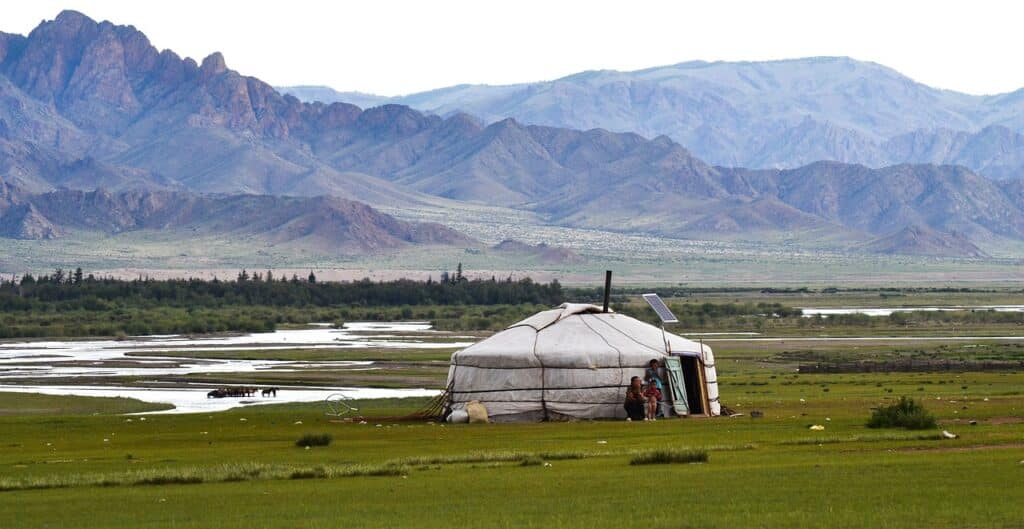
It was around 3 AM when I woke up from the cold. I was shivering and still had not eaten any nutrient-rich meal in over 36 hours. Although it had been 12 °C during daytime, the temperature had now dropped below -10 °C. While the last piece of wood slowly burned away inside the nearby fireplace, the remaining flames just created enough light for me to see breath leaving my body as I exhaled. Just when I realized that my guide, who was supposed to sleep on the other side of the traditional yurt, was gone, he silently opened the small wooden entrance door, carefully walked in, put more wood in the fireplace, and went back to sleep. As the flames gracefully started dancing inside in the fireplace while slowly growing bigger again, my eyes, which were barely open, stared at the stars through a small opening located at the centred top part of the yurt. I knew that this trip was going to be demanding, but only 2 days into my journey, I started to doubt that I was properly prepared for this demanding adventure. After I stopped shivering, I slowly drifted back into a deep sleep with one legitimate question crossing my mind: What am I doing here?
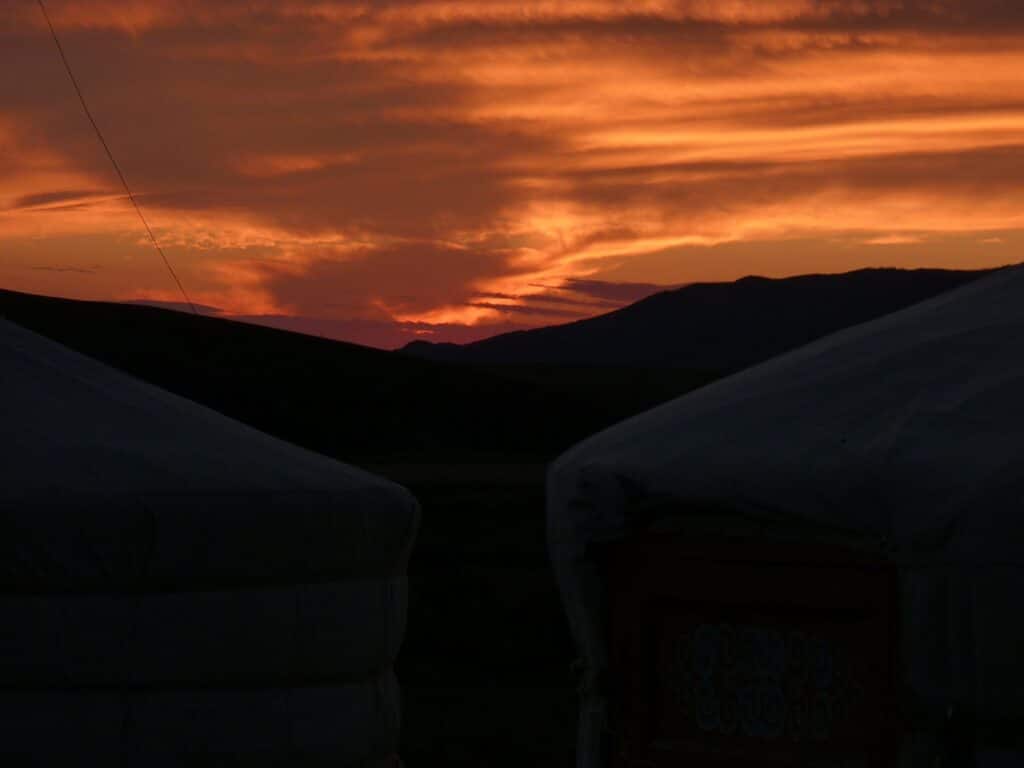
Why travel to Mongolia?
Never has it been easier to travel around the globe. With cheap flights and countless destinations available at any time, finding remote places to experience true isolation has become a real challenge, especially for solo adventurers like me. When I was desperately searching for a new place to explore without hundreds and thousands of other tourists around me, I came across a mysterious and equally attractive country called Mongolia.
“Why would anyone even travel to Mongolia?” my best friend asked me a few days before my departure from Frankfurt, Germany. I hesitated. The more I thought about plausible answers, the more I realized I had none. At least none my friend would have understood. I simply wanted to get out. Getting away from everything and everyone I knew. I wanted to explore. Feel the nature. Experience isolation. And soon I would do exactly that. Before I knew it, I was boarding an airplane that carried me 8300 km across the world to meet a man that barely spoke English. After spending one night in Mongolia’s capital, Ulaanbaatar, I woke up early (06:30 AM) to meet Gamba, a 54-years old local that earned his money by driving tourists across country with his (very old!) Russian jeep. We smiled at each other, shook hands, and got into his vehicle right away. With “yes”, “no”, “sleep”, “food”, and “good” being the only words in his vocabulary, all I could do was pointing out my locations of interest on a paper map. Minutes later, we were on the way towards Khorgo Volcano, the main nature spot I wanted to visit. However, before reaching the actual volcano crater, we scheduled a few stops along the way.
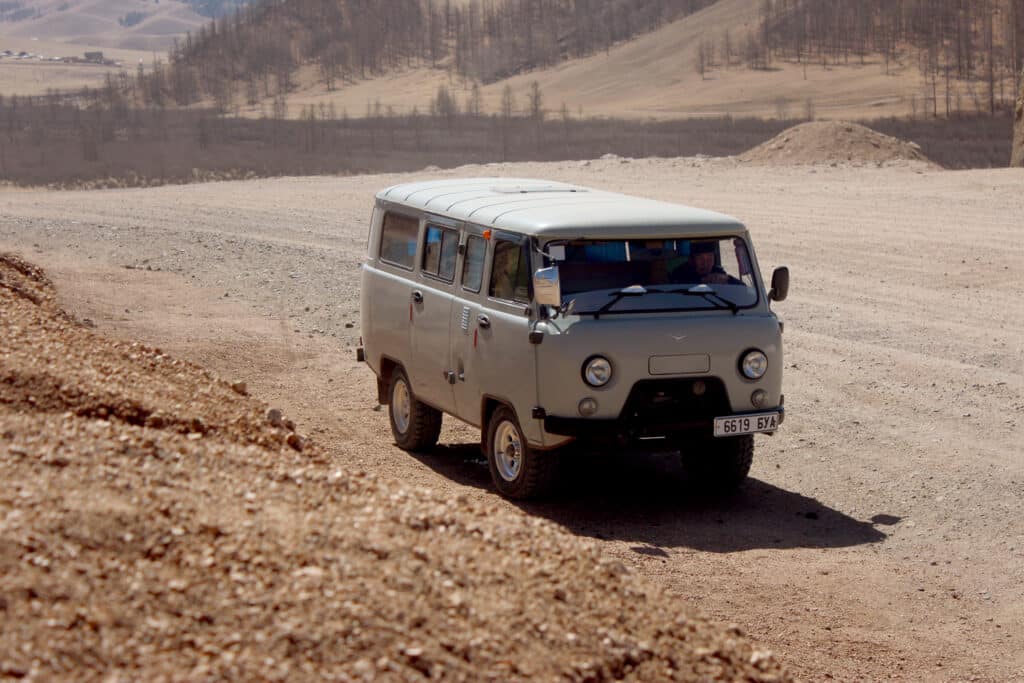
Leaving Ulaanbaatar into the unknown
After we had left Ulaanbaatar behind us, I immediately realized that this wouldn’t be an easy trip. All of a sudden, there were no streets anymore. Gamba seemed confident and I could only assume that he knew where he was going. There was also not much to see. At least nothing that would keep me entertained as we slowly moved forward over bumpy fields and small hills. I got the feeling of being on a different planet. Until today, it is hard for me to grasp the dimensions and the isolating that I experienced during this trip. At the end of the day, it had taken us roughly 7 hours to travel a distance of only 300 km. I was equally exhausted and happy when I saw that we approached some sort of village. A nomad camp located close to the bottom of a small mountain range to be precise.
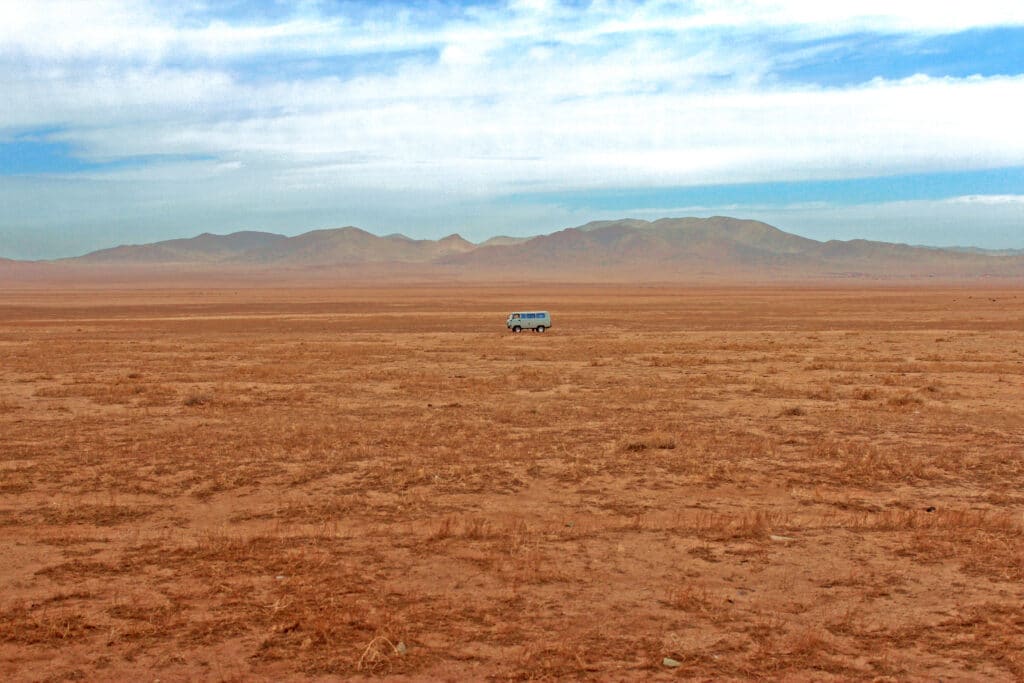
At this point, I had no idea where exactly we were and was a little nervous about my first night out there in the very isolation I was so desperately seeking while being back home in Germany. Gamba somehow managed to let me know that it cost me 5 US$ to stay at the Ger home for the night. I gladly handed out the cash and was promptly escorted to my temporary home, a traditional yurt with 2 beds inside. One for me and one for Gamba, the kind person that would later walk through the cold Mongolian night a few hours later only to gather new fire wood that kept me from being cold.
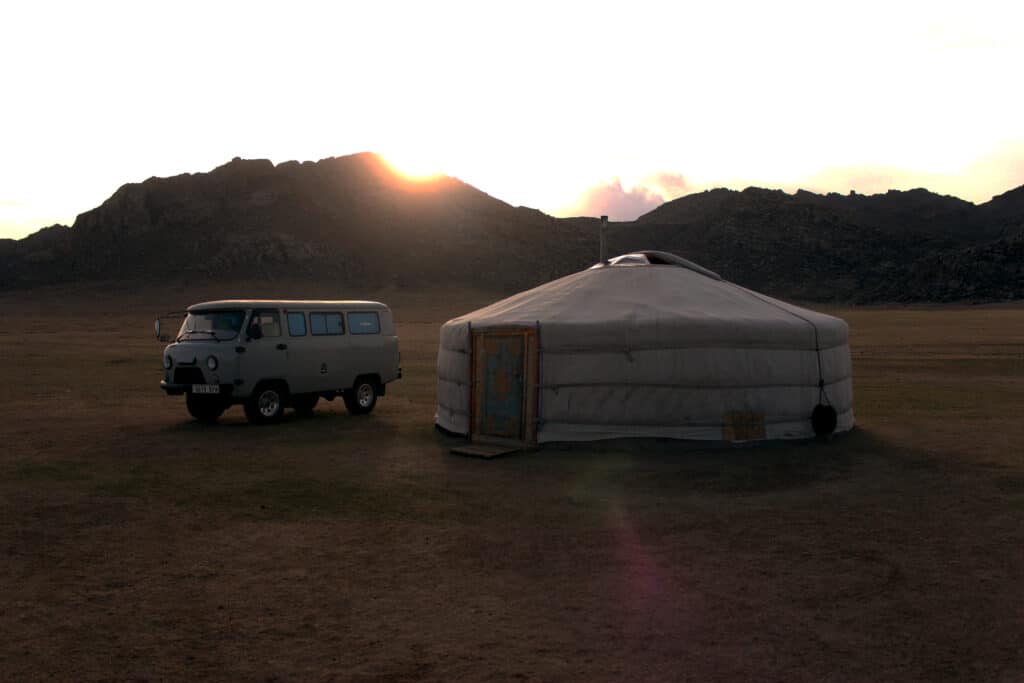
Find Your Memorable Mongolian Experience HERE
Exploring Mongolian desert
At around 8:00 AM, I woke up from the sound of barking dogs. Once again, I noticed that Gamba was gone. This time, however, not to get new firewood. As I stepped outside, I saw him preparing the jeep for the next stage of our journey. On the way to Khorgo Volcano, we intended to stop at Elsen Tasarkhai, a part of the Mongol Els Sand Dunes (also known as the Small Gobi Desert). I knew where we wanted to go, but still had no idea about or current location. It turned out that our nights lodging was surprisingly close to the sand dunes. After only one hour of driving, I could already spot the first sand peaks in the far distance. 30 minutes later, the jeep stopped. Gamba pointed out the desert on the map and we agreed to stay for two hours before continuing the drive. I knew myself and could anticipate that 2 hours were cutting it quite short, considering the number of photos and drone videos I was planning to take. Hectically, I started to gather my gear and headed out towards the highest sand dune I could see in close proximity. The hike was steep and I felt out of breath as I approached the top. I was breathing heavily, leaned forward, and couldn’t believe my eyes.
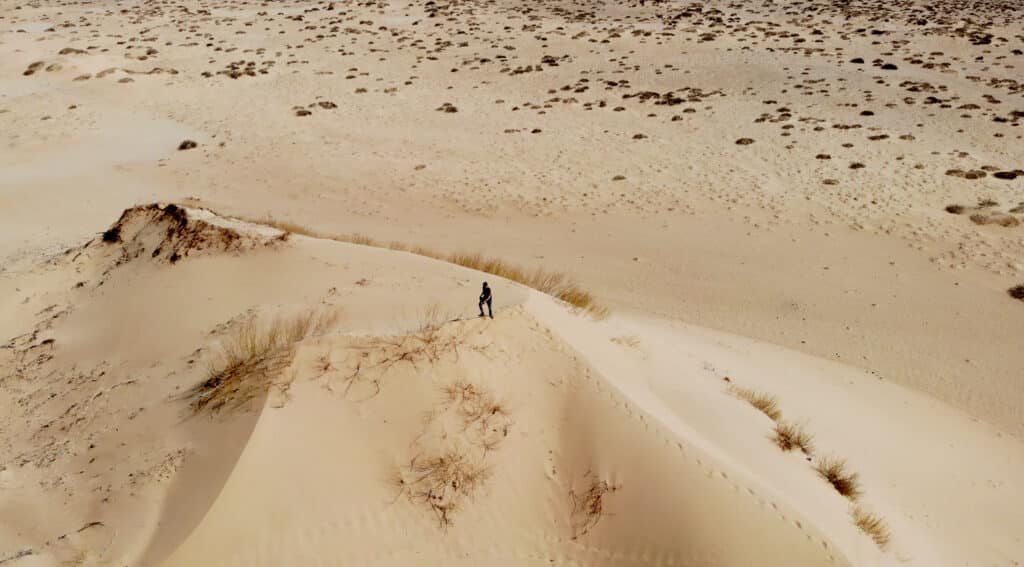
A view worth the journey
A mixture of accomplishment and freedom suddenly ran through my body. I stared into the distance for a few moments and then slowly turned around. Gambas jeep was barely distinguishable in between the sand dunes. Small breezes of wind created the only sound that accompanied me during this stop. Neither on the way to the sand dunes nor at the desert itself were any other people. Exactly how I imagined it when planning this trip. As I was taking pictures, I was wondering how it would be to walk through the desert all alone. How long would it take? Where would I end up? How far would I get without enough water? The general idea of people discovering places hundreds of years ago always fascinated me. I got caught in all kinds of thoughts when I realized that my 2 hours were almost over already. Slightly dehydrated but entirely happy, I made my way back to the jeep. As I was approaching the vehicle, Gamba waved and smiled at me, almost as if he wanted to make sure that I spotted him in between dozens of other vehicles while, actually, he was the only one around. A funny but very sweet gesture. It made me feel save and, in some way, somehow connected to him. Gamba studied the map for a few minutes and pointed out the next stop, Orkhon Waterfall. My randomly appearing doubts during the previous night varnished. All I felt now was excitement. As the jeep started moving again, I even managed to fall asleep for a while.
Stranded in between Mongolian sand dunes
“Are we already here?” I wondered as the jeep was suddenly reducing its speed and came to a full stop. I opened my eyes, looked around, and saw nothing but sand dunes. What felt like a deep sleep turned out to have been nothing but a 3-minutes nap. Not only were we still in between the sand dunes, we also got stuck. Gamba still seemed pretty relaxed, so I silently followed him outside the vehicle and observed was he was doing. His first attempt was digging sand from underneath the tires. Didn’t work. His second attempt to get us going again was to put a solid piece of wood underneath the back tires. Seemed to work for a second, but then the wood broke and the jeep rolled back into the whole, which got deeper every time we tried to get out. Just while I was wondering what Gamba would try next, another jeep came around the corner. After not seeing anybody since waking up in the morning, how was it possible that another vehicle showed up in exactly that same location? I couldn’t believe it and watched them towing our vehicle out of the sand in no time. While we had already been stuck for about an hour and a half, the “rescue mission” only took 5 minutes. Interestingly, everybody looked super relaxed and, somehow, happy. Not only did I love the nature, but I also started to feel more and more sympathy for Mongolia’s kind and warm-hearted people. What followed this unfortunate incident was another bumpy and rather boring 4-hour drive over hills and empty fields.
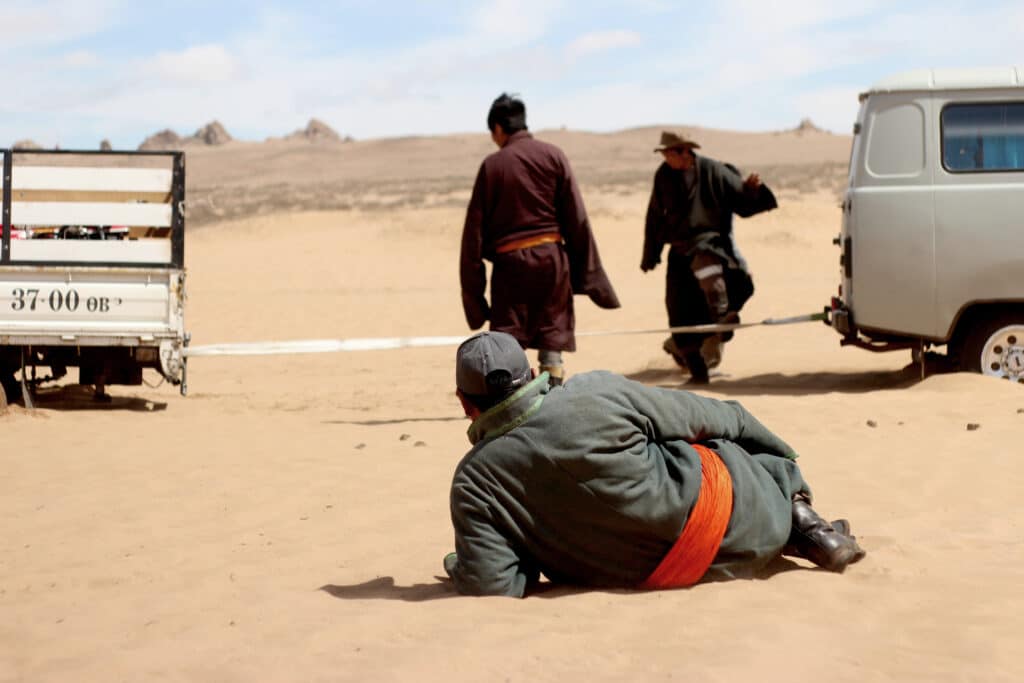
A brief visit at Orkhon waterfall
We finally arrived another nomad camp around sunset. It wasn’t entirely dark yet, so I decided to make a quick run to the waterfall, which was only a few minutes away from our yurt. While I was walking towards the waterfall, a stray dog joined my journey. Accompanied by my new animal friend, I climbed over some rocks and finally reached the edge of a steep cliff. I sat down, took in the scenery, and realized that it started to snow. A few sunset-pictures later, I made my way back to the camp.
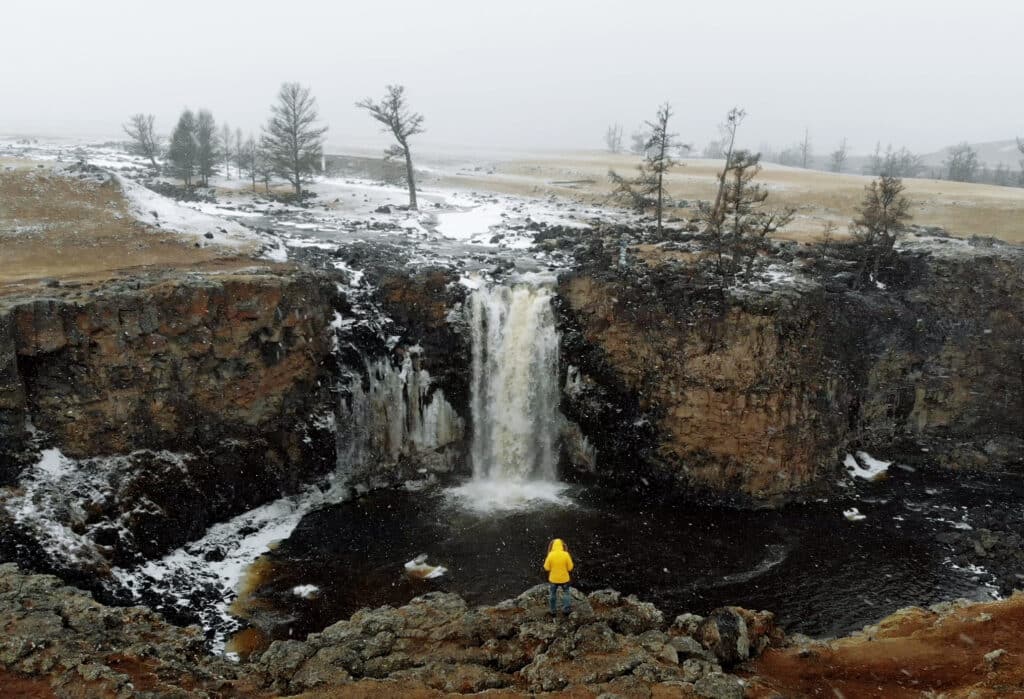
With a better choice of cloth, or perhaps because I was super exhausted, I comfortably slept through the entire night without waking up. Since I fell asleep quite early, I even woke up before Gamba did (never happened before or after this night ever again!). I silently left the tent and walked around camels, watched people riding horses, and some older women preparing food and making cloths. Gamba woke up about 30 minutes after me and, as every morning, started checking his jeep.
The baby and me
Before leaving, we quicky went back to the family’s main tent to say “goodbye”. We knocked on the wooden door and patiently waited for a few seconds. A woman, breastfeeding her baby, opened the door, smiled, and waved us in. Gamba and her were talking for a few minutes and before I knew it, the woman handed me her baby and left the yurt with my guide. There I was. Alone with the little baby of a woman I didn’t even know the name of. About 15 minutes later, I slowly pushed the door open with my foot and discovered that Gamba, the man that was patiently driving me around the country in his jeep until then, was now horseback riding to help the family gather their cattle. Amazed by this situation and trust the family had put into me, I looked down at the baby and smiled. The baby imitated me and smiled back. To me, moments like this make a journey truly unforgettable.
Arriving and climbing Khorgo volcano
After a small breakfast, we started to head towards our final destination, Khorgo Volcano. Since the distance of 400 km took us about 8 hours (not including breaks), we split it into two trips. This part of the journey was by far the most remote. Between sporadically appearing nomad camps, there was nothing. No cars, no people, not even animals.
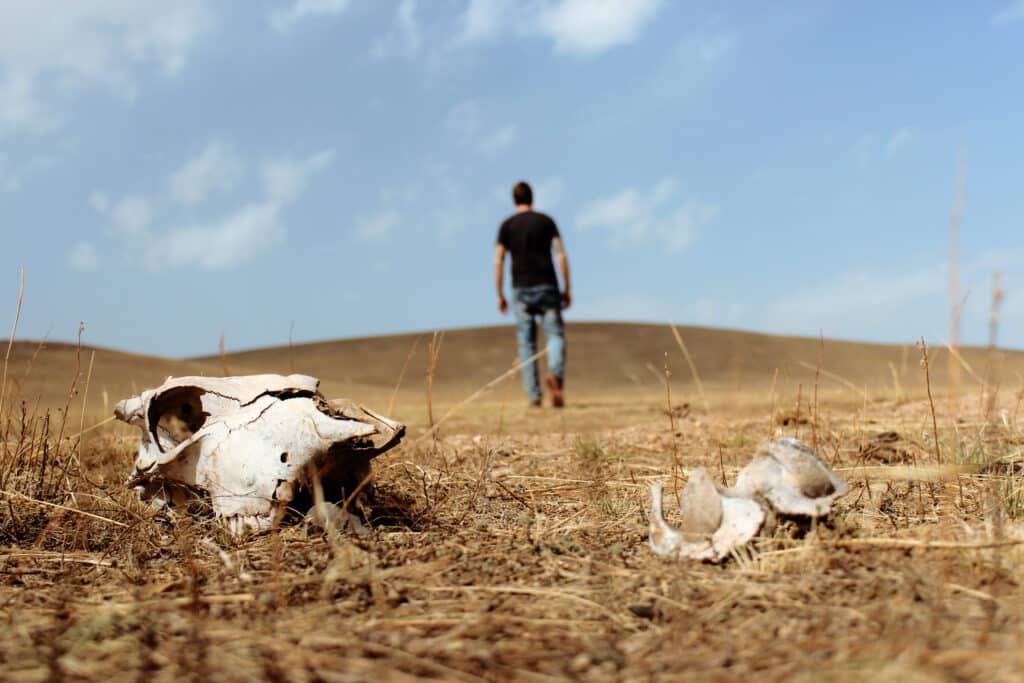
The procedure kept repeating itself. We approached nomad camps, arranged a bed, spent the night, and moved on until we finally arrived. Even 30 minutes before even getting to the volcanos bottom, I was already able to spot it. It was massive and majestic. The surrounding lowlands made it look even bigger. Gamba parked the car and pointed out that I could stay for 2 hours. After I made my way all the way up the volcano, I started taking pictures like a crazy person. The only problem: The volcano crater was way too big for me to capture it in one shot with my DSLR. There was only one logical solution for me. I had to bring the drone up.
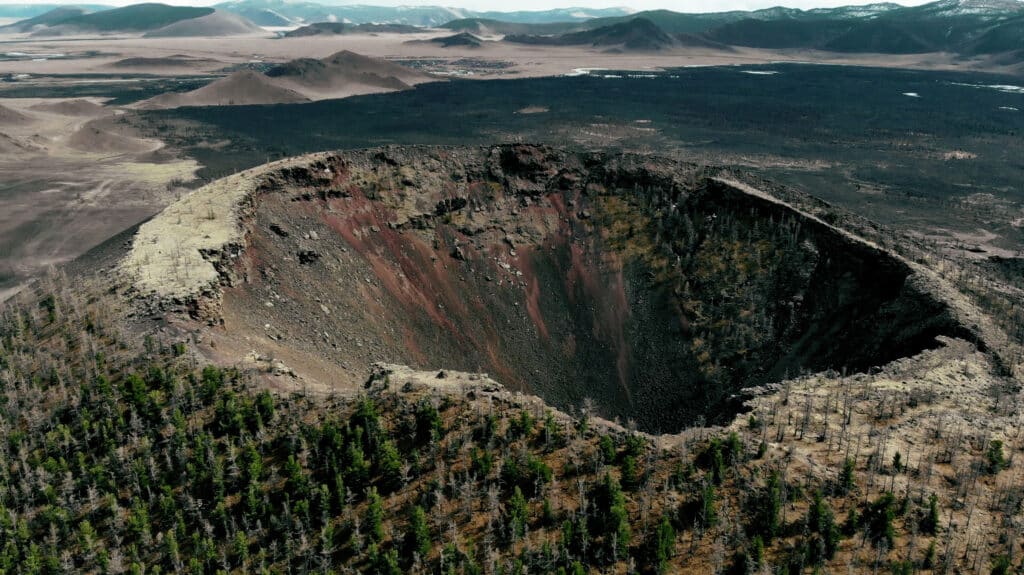
Although it was pretty windy, I managed to get some decent shots. I also got really cold, so I decided to head back even though I still had about 45 minutes left. On the way down, I realized that it was starting to snow again. I tried to not slip on the wet rocks and managed to get back to Gamba safe and sound. “Good?” he wanted to know as I closed the jeeps passenger door behind me. I nodded and showed him the pictures and videos of the drone on my cell phone. He was extremely interested and amazed by the footage. After all, I didn’t even know how many of the few people traveling Mongolia also carried a drone before. For all I knew, this could be the first time he saw something like that. Cold, hungry, happy, and sad that the trip slowly came to an end, we drove back to a nearby nomad camp and spent the night.
Many things crossed my mind when I went to sleep that very night. I thought of the places we visited, the positive vibes throughout the entire journey, the isolation, the adventure. I was happy to have accomplished what I did, fully knowing that without Gamba (or any other knowledgeable driver for that matter) none of this would have been possible. The lack of infrastructure, the language problem along the way, the technical difficulties of the car. I could have not dealt with any of this by myself. Little did I know that the problems weren’t over yet.
Book Your Memorable Mongolian Experience HERE
A rough wake-up call
“Go, go, go” were the words I remember hearing first when Gamba touched my shoulder to wake me up the morning after my volcano visit. I didn’t know what it was, but something seemed off. Gamba collected his stuff and carried everything out of the yurt. Without packing anything, I walked up to the main entrance to see what this was all about. Once I opened the door, I saw two things. First, a very beautiful and clear blue sky. My second observation: Snow. A lot of snow.
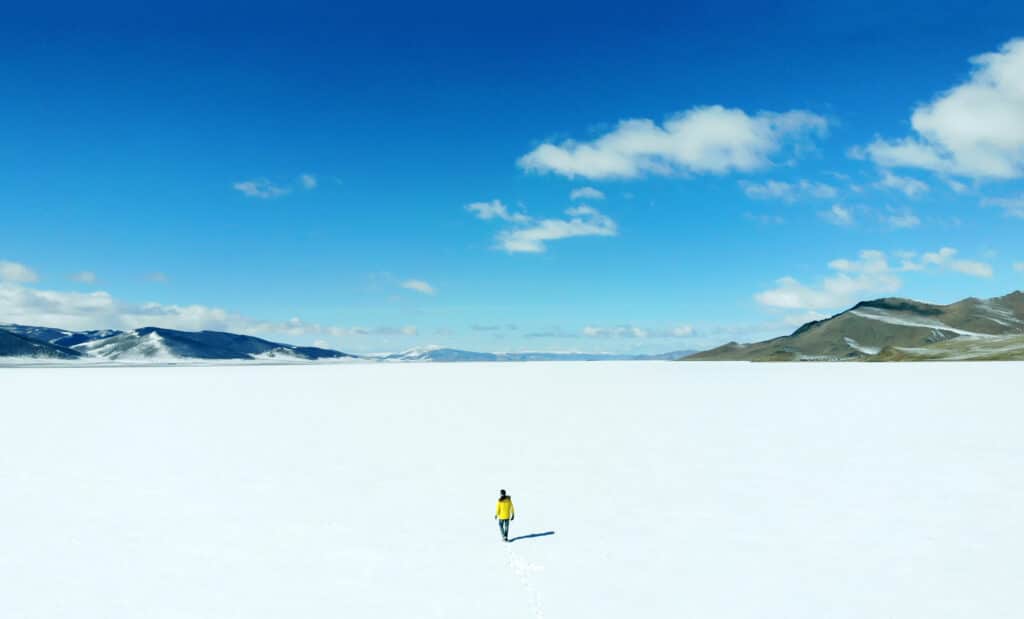
While getting ready and loading all my belongings into the jeep, I still didn’t know what the issue really was. All I knew was that we were supposed to begin our 10-hours journey back to Ulaanbaatar. But why the stress? 15 minutes into our homeward journey, I figured it out. The snow was beautiful. If it had been a skiing area or winter resort, it would have been perfect. However, in our case, it covered everything, including the car tire tracks that Gamba used as a general navigation. Especially when crossing river beds, he would follow the tracks that pointed out spots suitable for crossing. Due to the snow, Gamba had to slowly approach the river, dip into the water, and decide whether or not it was possible to cross. The snowfall of that night caused us such a delay that it took us an entire day longer to return to Mongolia’s capital. Crossing the first riverbed alone took us about 3 hours, whereas it took us only 10 minutes the day before.
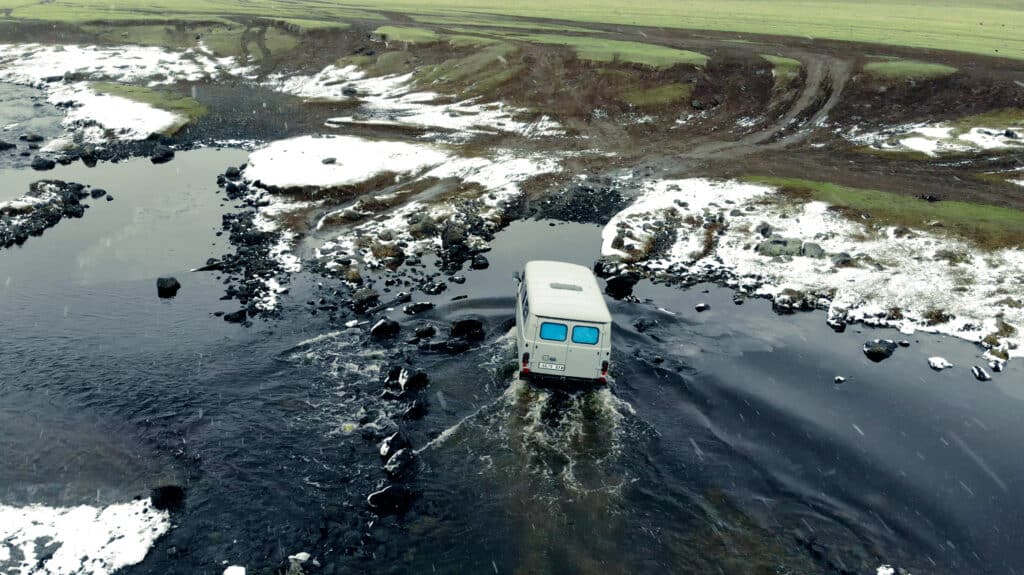
The final goodbyes
At the end of my journey, Gamba and me took a few pictures together and hugged each other. It wasn’t a regular and quick “goodbye” hug. It was the kind of hug that told a story. A gesture that represented the feeling of two people that spent a very intimate time together, fully aware that they may not see each other again. But who knows? Maybe I will go back one day to see how big the baby has grown by then.
Book Your Stay in Mongolia
Search, compare and book hotels & rentals at the best prices sourced from major booking sites including Booking.com, Hotels.com, Expedia, Vrbo and more. You can move the map to search for accommodations in other areas and also use the filter to find restaurants, purchase tickets for tours and attractions and locate interesting points of interest!


Thomas Später, PhD, is an experienced backpacking traveler that specializes in adventurous trips around the globe. He has traveled to remote and exotic places, such as Namibia or Mongolia and focuses on landscape and wildlife photography to share the beauty of our planet with others. In 2021, Thomas published a (German) book about Overpopulation and Over-consumption (Die Überbevölkerung). With his awareness of current global issues, he uses his travels to support particularly local hotels and restaurants to raise awareness for the nature and culture of his destinations. Follow Thomas´ adventures on Instagram as well as on his website, World In Frames.